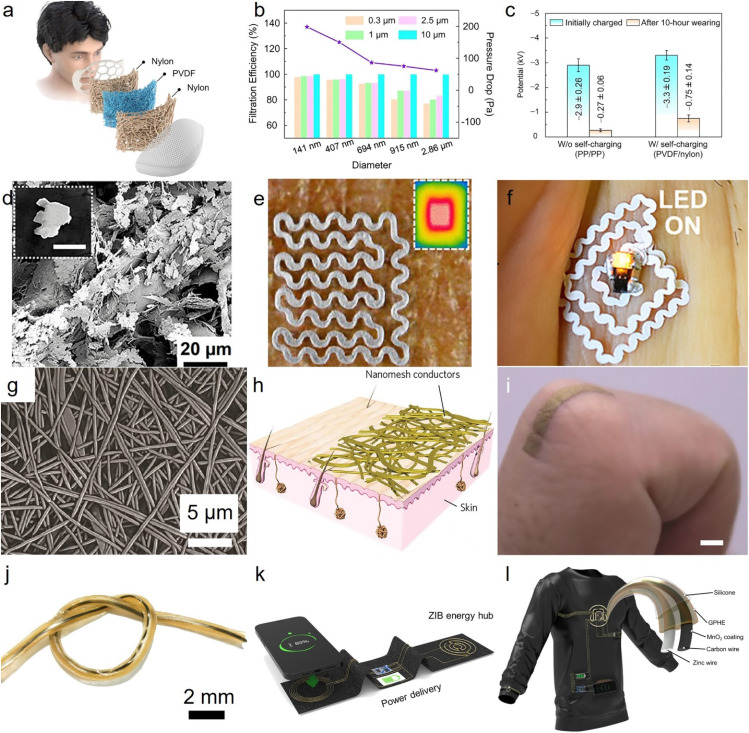FIG. 6.
Fibrous platforms for wearable and implantable bioelectronics. (a) A diagram outlining the design of the self-charging mask. (b) The effect of fiber diameter on filtration efficiency and pressure drop. (c) the difference in electrostatic potential reduction between the self-charging and non-self-charging masks. The presented data represent the mean values with standard deviations, based on five independent samples. (a)–(c) Reproduced with permission from Peng et al., Nat. Commun. 13, 7835 (2022). Copyright 2022 Authors, licensed under a Creative Commons Attribution (CC BY) license.135 (d) Silver microflakes deposited on cellulose fibers and their full integration to (e) wireless heater and (f) wireless optical neurostimulators. Reproduced with permission from Sadri et al., ACS Appl. Mater. Interfaces 10, 31061 (2018). Copyright 2018 American Chemical Society.128 (g) SEM image of nanomesh conductor made from polyvinyl alcohol (PVA). (h) A schematics of laminated gold film on the electrospun PVA fibers. (i) Seamless integration of nanomesh conductors on the finger skin. (g)–(i) Reproduced with permission from Miyamoto et al., Nat. Nanotechnol. 12, 907 (2017). Copyright 2017 Springer Nature.133 (j) An optical image of zinc ion fibrous batteries (ZIB) with graphene oxide embedded PVA hydrogel electrolytes. (k) Wireless power transfer between a smartphone and ZIB fibers using textile-based technology. (l) A design for wireless textile body area network. (j)–(l) Reproduced with permission from Xiao et al., Sci. Adv. 7, eabl3742 (2021). Copyright 2021 American Association for the Advancement of Science.134

